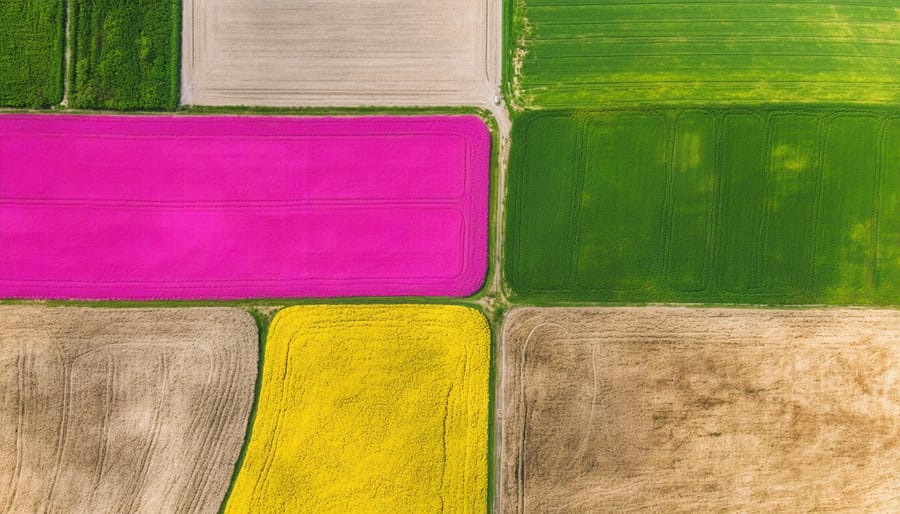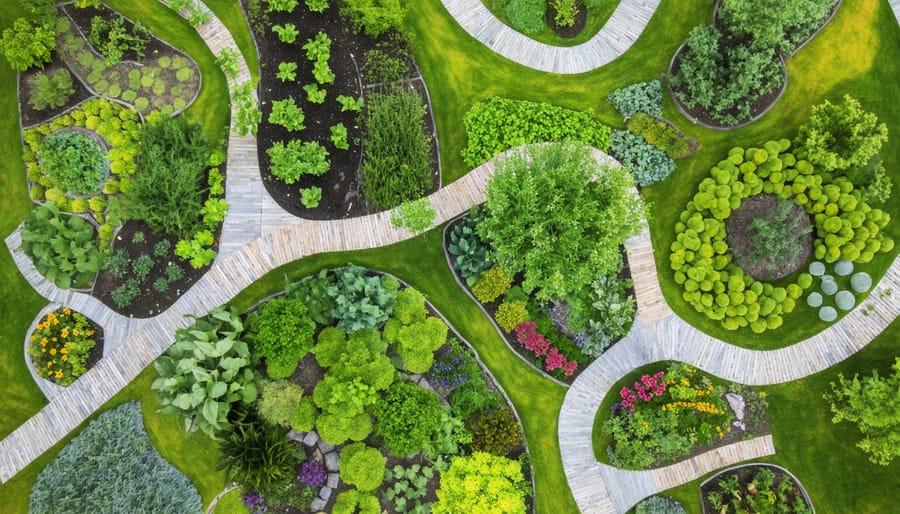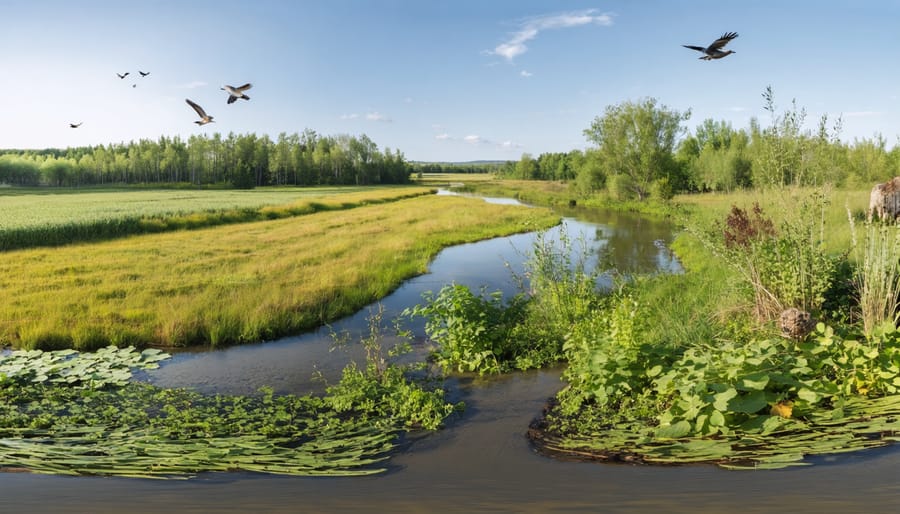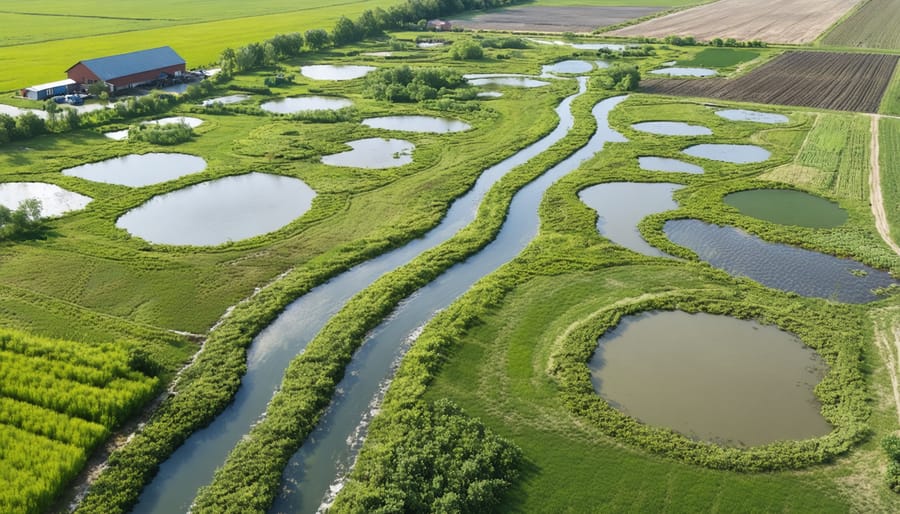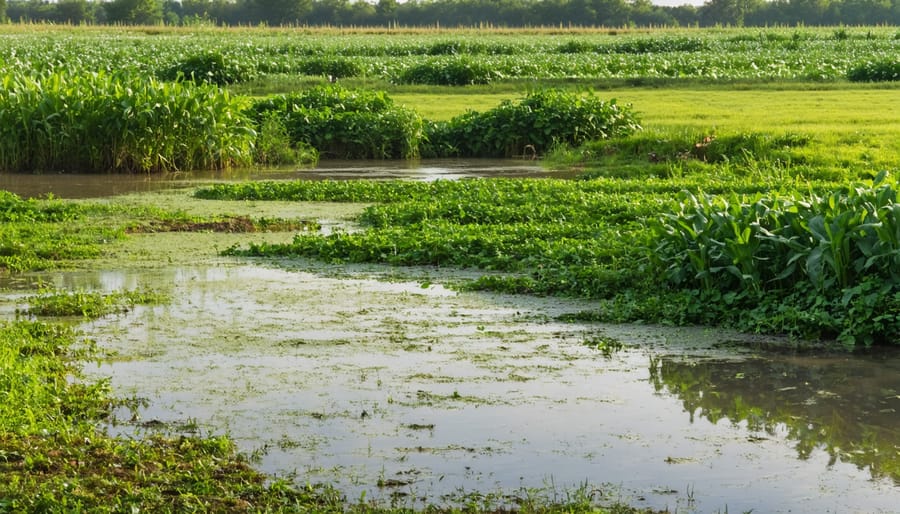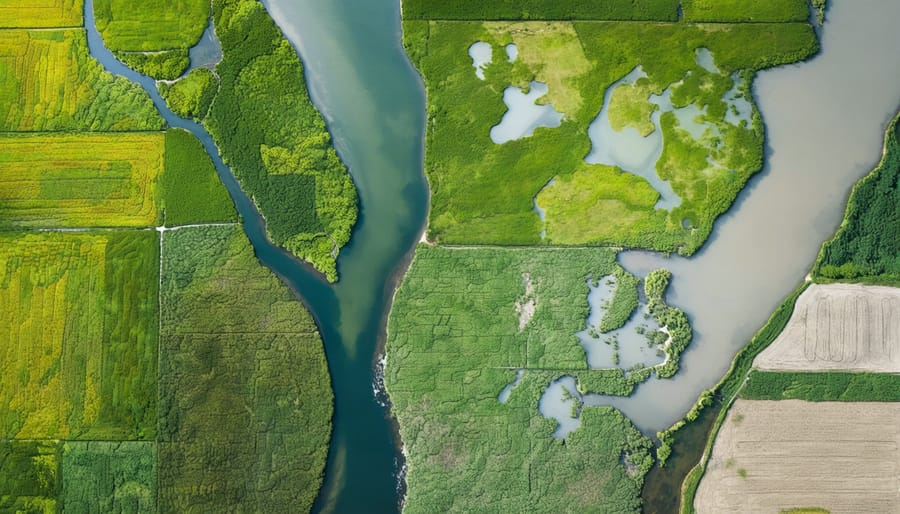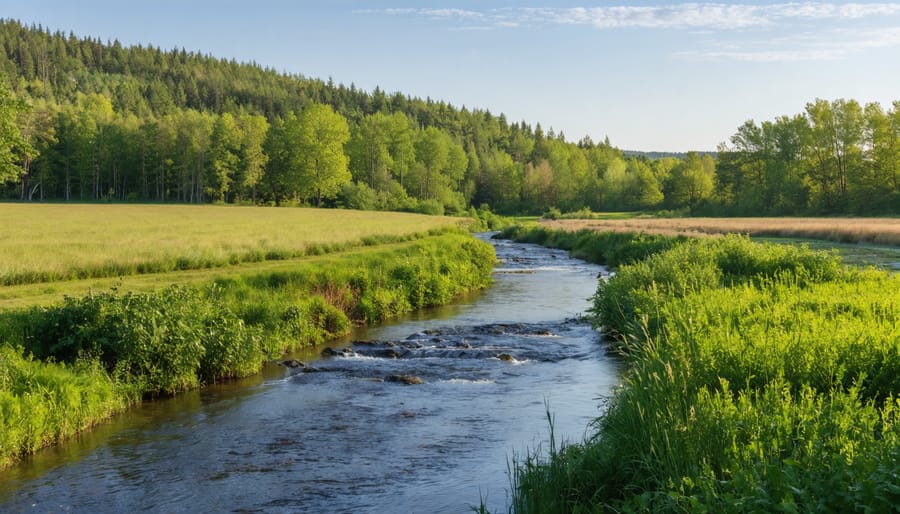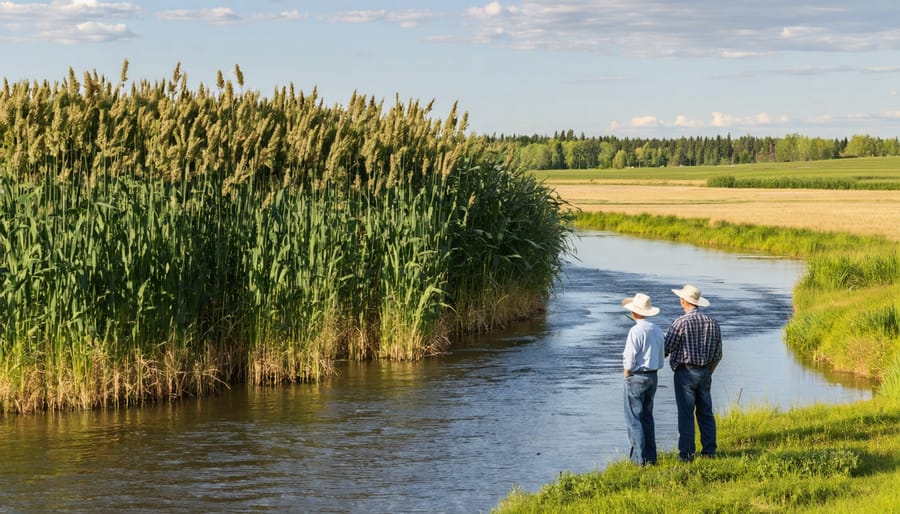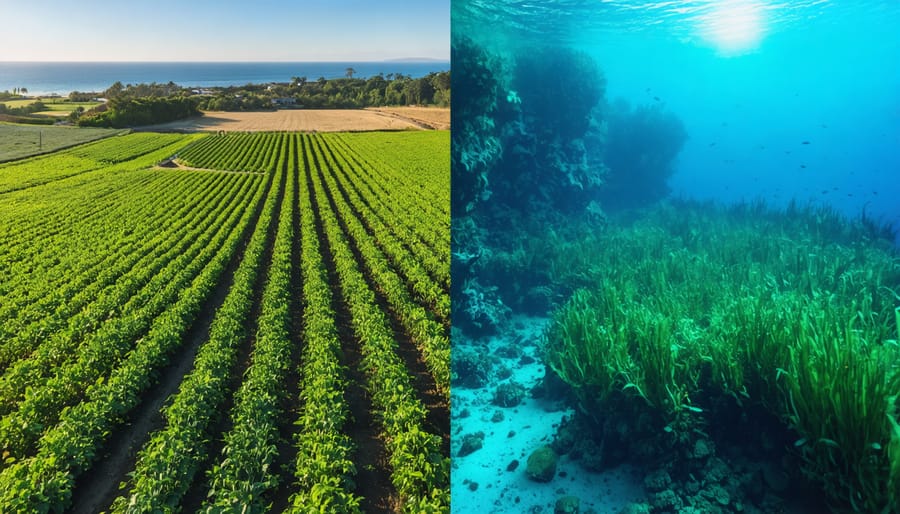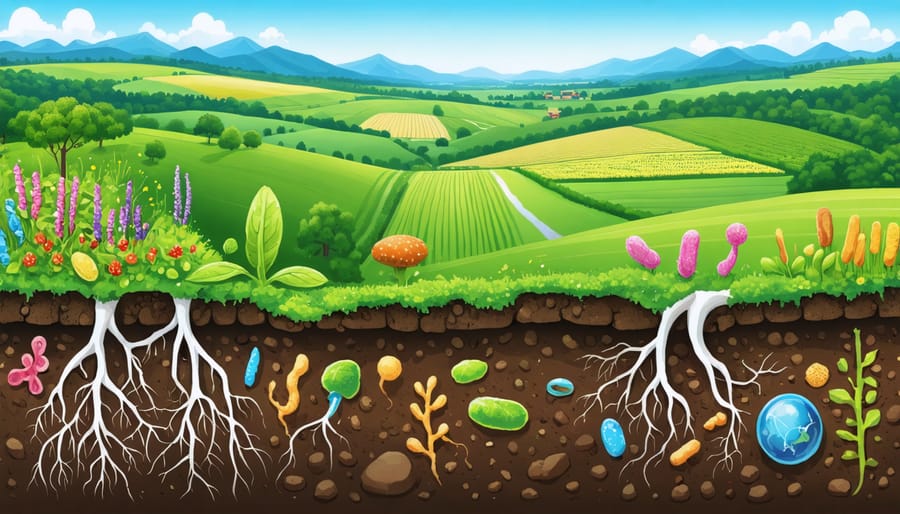Urban ecosystems pulse with life beneath Edmonton’s skyline, where coyotes prowl through river valley corridors and peregrine falcons nest on high-rise ledges. These wild spaces within our concrete jungle do more than add splashes of green – they form living laboratories where nature and city life converge in fascinating ways.
From rooftop gardens buzzing with native pollinators to wetland parks that naturally filter stormwater, our cities harbor complex ecological networks that benefit both wildlife and residents. These urban habitats reduce flooding, moderate temperature extremes, and improve air quality while providing crucial stepping stones for species moving through fragmented landscapes.
The transformation of Calgary’s East Village riverfront from industrial brownfield to thriving riparian park demonstrates how intentional urban ecosystem design creates resilient cities. Native plantings now stabilize banks once stripped bare, while carefully planned wildlife corridors enable safe passage for deer, foxes and countless migratory birds.
As climate change intensifies, these urban wild spaces become increasingly vital – not just for nature, but for building communities that can weather environmental challenges. By understanding and enhancing our city ecosystems, we invest in natural infrastructure that pays dividends in public health, biodiversity, and quality of life for generations to come.
The Living Network of Urban Green Spaces
Parks and Community Gardens
Parks and community gardens serve as vital green hubs in our urban landscapes, offering crucial spaces where nature and city life intersect. These managed areas do more than provide recreational spaces – they actively enhance urban biodiversity and support local ecosystems. In Calgary, for example, the Nose Hill Natural Environment Park demonstrates how preserved natural areas within city limits can maintain native prairie grasslands and support local wildlife populations.
Community gardens, increasingly popular across Canadian cities, play a dual role in urban ecosystem management. They provide growing space for local food production while creating habitat patches for pollinators and beneficial insects. The success of Edmonton’s community garden program shows how these spaces strengthen neighborhood connections while supporting urban wildlife corridors.
These green spaces also serve as living laboratories where residents can observe and participate in ecosystem management. From butterfly gardens in local parks to native plant demonstrations in community plots, these areas help educate the public about sustainable urban practices while providing essential ecosystem services like water filtration and temperature regulation.
Natural Areas and Corridors
In Canadian cities, natural areas and wildlife corridors serve as vital lifelines for urban biodiversity. These green spaces, ranging from river valleys to woodlots, create essential pathways for wildlife movement while supporting native plant communities. Calgary’s Nose Hill Park and Edmonton’s North Saskatchewan River Valley system exemplify how large natural areas can be preserved within city boundaries, providing habitat for deer, coyotes, and numerous bird species.
Wildlife corridors connect these larger natural spaces, often following waterways or utility corridors. These connections help maintain genetic diversity among urban wildlife populations and reduce human-wildlife conflicts by providing safe passage routes. In Medicine Hat, for example, connected grassland corridors allow pronghorn antelope to move safely through urban areas during seasonal migrations.
Many Alberta municipalities are now incorporating these corridors into their development plans, recognizing their importance for both wildlife and community well-being. Urban farmers and property owners often play a crucial role by maintaining natural vegetation along property boundaries and creating stepping-stone habitats through native plantings. These efforts help support pollinator populations and beneficial insects that contribute to urban agriculture while maintaining ecological connectivity throughout the city landscape.
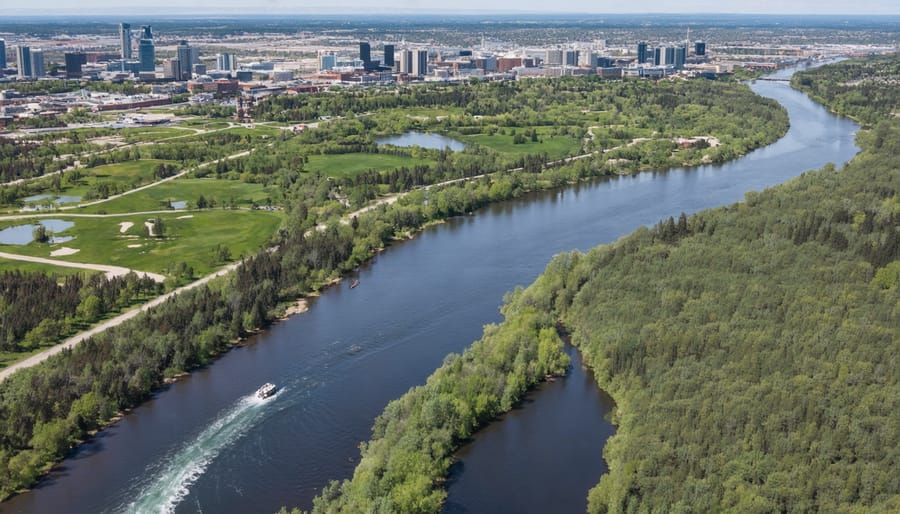
Alberta’s Urban Biodiversity Success Stories
Edmonton’s Naturalization Project
Edmonton’s naturalization project stands as a shining example of urban habitat restoration in Canada. Since 2014, the city has transformed over 250 hectares of traditional manicured parkland into thriving natural ecosystems. This initiative focuses on converting underutilized urban spaces, including roadside margins and unused lots, into areas that support local wildlife and native plant species.
The project prioritizes the planting of indigenous Alberta species, including rough fescue, prairie crocus, and saskatoon bushes. These plants not only require less maintenance than traditional landscaping but also provide essential habitat for local birds, pollinators, and small mammals. In the River Valley area alone, naturalization efforts have led to a 40% increase in bird species diversity since the project’s inception.
Local farmers and agricultural professionals have played a crucial role in this transformation by contributing their expertise in soil management and native plant cultivation. The city partners with local seed producers to source native plant materials, creating additional revenue streams for regional agricultural businesses.
Community engagement has been fundamental to the project’s success. Edmonton residents participate in seasonal planting events and educational workshops, learning about native species and sustainable landscaping practices. The initiative has also created opportunities for knowledge sharing between urban and rural communities, bridging the gap between city dwellers and agricultural professionals.
Monitoring data shows that naturalized areas reduce maintenance costs by approximately 60% compared to traditional parkland, while significantly improving stormwater management and soil health.
Calgary’s Pollinator Paradise
Calgary has emerged as a leading example of how cities can effectively support urban pollinators through thoughtful planning and community engagement. The city’s Pollinator Paradise initiative, launched in 2019, has transformed vacant lots and municipal spaces into thriving habitats for bees, butterflies, and other beneficial insects.
Key to the program’s success is the strategic planting of native flower species like wild bergamot, blanket flower, and prairie coneflower, which provide reliable food sources throughout the growing season. These carefully selected plants not only sustain pollinators but also require minimal maintenance, making them ideal for urban settings.
Local farmers have reported increased crop yields in community gardens and urban farms near these pollinator zones, demonstrating the direct agricultural benefits of the initiative. The city maintains over 200 dedicated pollinator gardens, ranging from small pocket parks to extensive corridor plantings along pathways and roadways.
Community involvement has been crucial, with local schools and community associations participating in planting events and monitoring programs. Calgary’s approach serves as a practical model for other Canadian municipalities, showing how urban spaces can contribute to agricultural productivity while enhancing biodiversity. The program has created a network of green spaces that connect isolated habitats, allowing pollinator populations to move freely throughout the city.
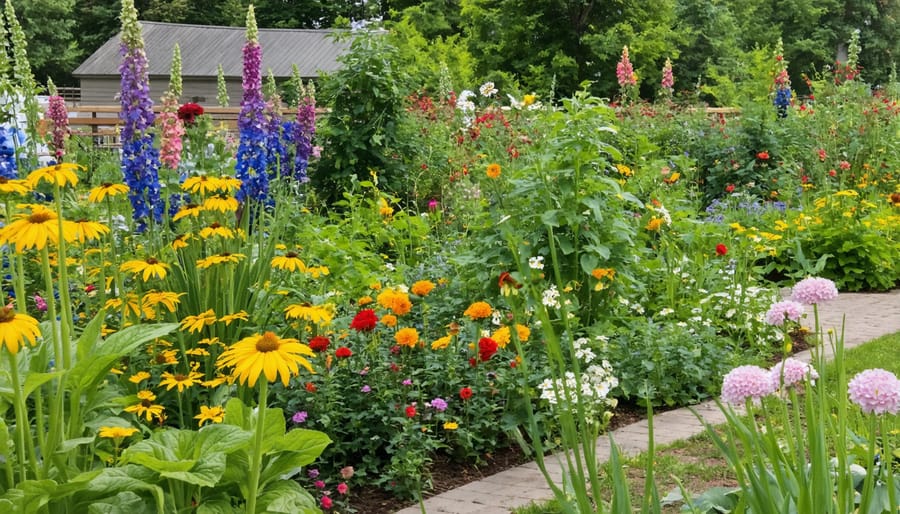
Essential Ecosystem Services in Urban Settings
Natural Climate Control
Urban green spaces serve as natural temperature regulators in our cities, creating what local experts call “cooling islands” that help combat the urban heat island effect. In Edmonton, for example, the River Valley park system demonstrates how trees and vegetation can reduce summer temperatures by 2-4°C compared to surrounding concrete areas.
These natural cooling mechanisms work through two main processes: shade creation and evapotranspiration. The canopy cover from mature trees blocks direct sunlight, while plant transpiration adds moisture to the air, creating a more comfortable microclimate. During Calgary’s hot summer months, areas with established green spaces require significantly less air conditioning, reducing energy consumption in nearby buildings by up to 30%.
The benefits extend beyond summer cooling. Strategic placement of vegetation around buildings provides natural windbreaks during Alberta’s harsh winters, decreasing heating costs and energy usage. The City of Red Deer’s urban forestry program has shown that properly positioned trees can reduce winter heating bills by 10-25%.
For urban farmers and community gardeners, these temperature-moderating effects create more stable growing conditions. Local food production benefits from the extended growing season that urban heat management provides, while requiring less irrigation due to improved moisture retention in these managed ecosystems. This natural climate control system demonstrates how urban green spaces contribute to both environmental sustainability and economic efficiency in our cities.
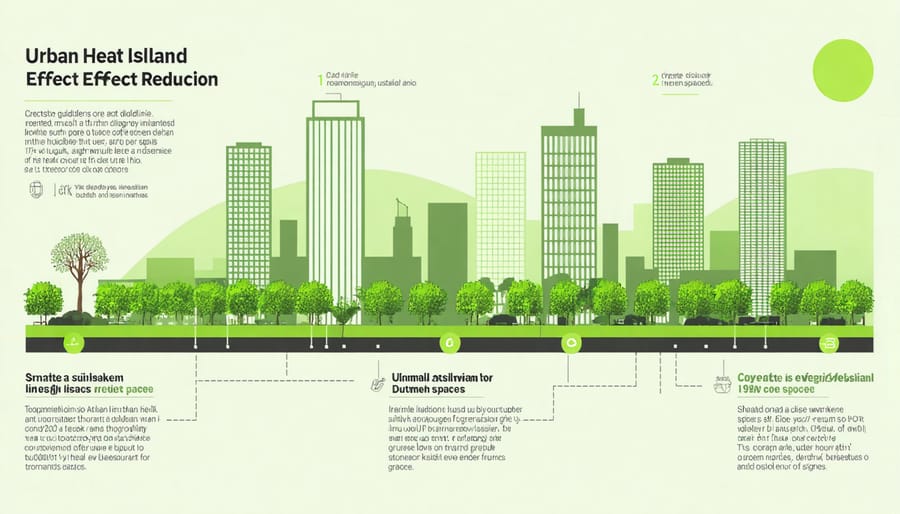
Water Management and Soil Health
Urban ecosystems play a vital role in managing water flow and maintaining soil health within our cities. In Calgary and Edmonton, innovative stormwater management systems integrate natural filtration processes through wetlands and bioswales, which help remove pollutants and reduce the burden on municipal water treatment facilities.
These urban green spaces act as natural water filters, with plants and soil microorganisms breaking down contaminants before they reach our groundwater. For instance, the Nose Creek watershed in Calgary demonstrates how urban wetlands can effectively manage spring runoff while improving water quality through natural filtration.
Soil health in urban areas benefits from the presence of diverse plant species and their root systems. Native prairie grasses and local plant varieties help prevent soil erosion, increase organic matter content, and enhance water retention capabilities. Community gardens and urban farms throughout Alberta are showing how proper soil management practices can transform compacted urban soil into productive growing medium.
The City of Edmonton’s naturalization program has successfully implemented rain gardens that not only manage stormwater but also build healthy soil ecosystems. These areas support beneficial insects and microorganisms that enhance soil structure and fertility, creating a self-sustaining cycle of soil improvement.
For urban farmers and gardeners, these natural systems provide valuable lessons in sustainable water and soil management, offering practical solutions that can be scaled from backyard gardens to larger urban agricultural projects.
Community Engagement and Urban Agriculture
Local Food Security
In recent years, urban farming initiatives have emerged as a vital component of food security strategies across Canadian cities. Calgary’s community gardens program, for instance, has transformed over 80 vacant lots into productive growing spaces, yielding an estimated 22,000 kg of fresh produce annually. These urban agricultural spaces not only provide local food sources but also create opportunities for community engagement and education.
Edmonton’s Urban Ag High program demonstrates how cities can integrate food production with education, teaching students practical farming skills while contributing to local food banks. The program produces approximately 2,500 kg of vegetables yearly, with 40% donated to community food support programs.
Rooftop gardens are gaining particular attention in dense urban areas. Toronto’s Sky Garden initiative has converted 1,200 square metres of unused roof space into vegetable gardens, producing fresh herbs and vegetables for local restaurants and community kitchens. This model has shown that every 100 square metres of rooftop garden space can yield up to 200 kg of vegetables per growing season.
These local food production systems strengthen community resilience by reducing dependence on long-distance food transportation and providing fresh, nutritious options to urban residents. During the recent supply chain disruptions, communities with established urban agriculture networks reported better access to fresh produce compared to those without such systems.
For urban planners and agricultural professionals, these successes highlight the importance of incorporating food production spaces into city development plans. The data shows that even small-scale urban farming can significantly impact local food security while creating valuable community connections.
Educational Opportunities
Urban ecosystems provide rich opportunities for hands-on learning and community engagement, connecting Canadians with their local environment. Many cities across Alberta and other provinces have developed innovative educational programs that blend scientific understanding with traditional ecological knowledge, creating meaningful learning experiences for students and community members alike.
Community gardens serve as living classrooms where residents can learn about local food production, pollinator relationships, and sustainable urban farming practices. These spaces often host workshops on composting, native plant identification, and organic growing methods, making them valuable resources for both experienced gardeners and newcomers to urban agriculture.
Several Canadian municipalities have established citizen science programs that enable residents to participate in ecosystem monitoring. These initiatives include bird counting projects, plant surveys, and water quality testing, allowing community members to contribute meaningful data while developing a deeper understanding of urban ecological systems.
School boards across the country are incorporating urban ecosystem studies into their curriculum, with many schools maintaining their own gardens or participating in local conservation projects. These programs help students develop practical skills while fostering environmental stewardship and community responsibility.
Professional development opportunities are also available for those interested in urban ecosystem management. Local colleges and environmental organizations offer certificates and workshops in urban forestry, green infrastructure maintenance, and sustainable landscaping practices. These programs help build capacity for long-term ecosystem management while creating employment opportunities in the growing field of urban environmental stewardship.
Through these educational initiatives, urban communities are developing the knowledge and skills needed to actively participate in creating healthier, more resilient city environments.
Urban ecosystems are vital threads in the fabric of our communities, offering invaluable benefits that extend far beyond city limits. As we’ve seen throughout Alberta and across Canada, these green spaces serve as living laboratories where nature and urban development can coexist harmoniously. From Calgary’s urban food forests to Edmonton’s pollinator gardens, these ecosystems demonstrate how cities can support biodiversity while enhancing our quality of life.
The success of urban ecosystems depends on active community participation. Whether you’re a farmer with expertise in soil health, a gardening enthusiast, or simply someone who cares about environmental sustainability, your involvement makes a difference. Consider joining local initiatives, starting a community garden, or sharing your agricultural knowledge with urban farming projects.
The future of our cities lies in creating resilient, sustainable environments that benefit both people and nature. By supporting urban ecosystem development, we’re investing in cleaner air, better water management, increased food security, and stronger community bonds. Small actions, like planting native species in your yard or participating in citizen science projects, contribute to the larger goal of building healthier urban environments.
Let’s work together to strengthen our urban ecosystems. Reach out to local environmental organizations, connect with community gardens, or start your own green initiative. Every effort, no matter how small, helps create more sustainable and livable cities for future generations.


